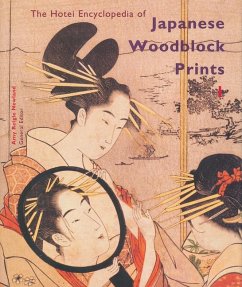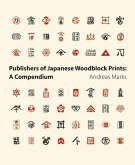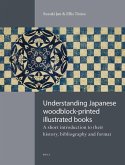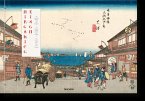The Hotei Encyclopedia of Japanese Woodblock Prints will serve as a source of quick reference as well as an in-depth study of all aspects of Japanese prints from the Edo (1600-1868) to Taish (1912-26) periods.
The first section of The Hotei Encyclopedia is divided into four main subject areas: historical background, the art history of Ukiyo-e prints, print production (materials and techniques, the publishing trade) and the history of collecting Japanese prints, with a shorter fifth section on conservation. Each subject area contains a longer survey article which is accompanied by shorter essays that highlight specific topics pertaining to Japanese prints and their development.
The second section of the book comprises an extensive alphabetical listing of well over a 2000 carefully cross-referenced entries on individual print designers and schools, publishers, carvers, printers and collectors, major Kabuki actors, materials and techniques, conservation, subject-matter/iconography, literature and miscellaneous print-related terminology. This is followed by various appendices, including such aspects as seals of publishers and carvers, signatures, maps and chronological tables.
With this ambitious project Hotei Publishing hopes to fill the gap for an extensive reference work and introduction to Japanese prints, one that will prove a valuable resource for teachers and students, art collectors, librarians and interested lay-people alike.
The first section of The Hotei Encyclopedia is divided into four main subject areas: historical background, the art history of Ukiyo-e prints, print production (materials and techniques, the publishing trade) and the history of collecting Japanese prints, with a shorter fifth section on conservation. Each subject area contains a longer survey article which is accompanied by shorter essays that highlight specific topics pertaining to Japanese prints and their development.
The second section of the book comprises an extensive alphabetical listing of well over a 2000 carefully cross-referenced entries on individual print designers and schools, publishers, carvers, printers and collectors, major Kabuki actors, materials and techniques, conservation, subject-matter/iconography, literature and miscellaneous print-related terminology. This is followed by various appendices, including such aspects as seals of publishers and carvers, signatures, maps and chronological tables.
With this ambitious project Hotei Publishing hopes to fill the gap for an extensive reference work and introduction to Japanese prints, one that will prove a valuable resource for teachers and students, art collectors, librarians and interested lay-people alike.
'The bulk of the encyclopedia are essays written by fifty experts dealing with the many technical, genre, and evolutionary aspects of the woodblock prints. As I read the encyclopedia from cover to cover, the quality of the essays struck me as consistently quite high, evidence of good editing...For collectors, the encyclopedia offers information on what to look for in quality, artist and publisher identification, and other critical details...The Hotei encyclopedia is an excellent starting point for collectors.'
Todd Shimoda, The Asian Review of Books, 2006. '
.... these two volumes are a major achievement. They summarize the current state of the field and its history, both in Japanese and in Western language publications, contain practical information of use to both novice and veteran collectors, and include a large number of indispensable reference materials, many available in English for the first time. Overall, the editors did an excellent job selecting topics and authors for the essays, which provide succinct summaries of their subjects. The best of these go beyond mere summarization and provide a sense of how studies on these topics developed historically, reveal recently addressed avenues of research, use close discussion of specific prints to amplify larger points that place print production within a cultural context, and suggest directions for future scholarship.
College Art Association Reviews, Pat Graham.
Todd Shimoda, The Asian Review of Books, 2006. '
.... these two volumes are a major achievement. They summarize the current state of the field and its history, both in Japanese and in Western language publications, contain practical information of use to both novice and veteran collectors, and include a large number of indispensable reference materials, many available in English for the first time. Overall, the editors did an excellent job selecting topics and authors for the essays, which provide succinct summaries of their subjects. The best of these go beyond mere summarization and provide a sense of how studies on these topics developed historically, reveal recently addressed avenues of research, use close discussion of specific prints to amplify larger points that place print production within a cultural context, and suggest directions for future scholarship.
College Art Association Reviews, Pat Graham.
'The bulk of the encyclopedia are essays written by fifty experts dealing with the many technical, genre, and evolutionary aspects of the woodblock prints. As I read the encyclopedia from cover to cover, the quality of the essays struck me as consistently quite high, evidence of good editing...For collectors, the encyclopedia offers information on what to look for in quality, artist and publisher identification, and other critical details...The Hotei encyclopedia is an excellent starting point for collectors.'
Todd Shimoda, The Asian Review of Books, 2006. '
.... these two volumes are a major achievement. They summarize the current state of the field and its history, both in Japanese and in Western language publications, contain practical information of use to both novice and veteran collectors, and include a large number of indispensable reference materials, many available in English for the first time. Overall, the editors did an excellent job selecting topics and authors for the essays, which provide succinct summaries of their subjects. The best of these go beyond mere summarization and provide a sense of how studies on these topics developed historically, reveal recently addressed avenues of research, use close discussion of specific prints to amplify larger points that place print production within a cultural context, and suggest directions for future scholarship.
College Art Association Reviews, Pat Graham.
Todd Shimoda, The Asian Review of Books, 2006. '
.... these two volumes are a major achievement. They summarize the current state of the field and its history, both in Japanese and in Western language publications, contain practical information of use to both novice and veteran collectors, and include a large number of indispensable reference materials, many available in English for the first time. Overall, the editors did an excellent job selecting topics and authors for the essays, which provide succinct summaries of their subjects. The best of these go beyond mere summarization and provide a sense of how studies on these topics developed historically, reveal recently addressed avenues of research, use close discussion of specific prints to amplify larger points that place print production within a cultural context, and suggest directions for future scholarship.
College Art Association Reviews, Pat Graham.








